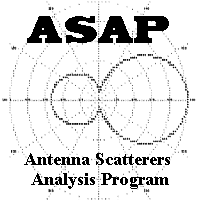
{ Note: for easier webpage creation some vectors are represented by bold underlines such as s rather than bold with an overbar as is standard }
GGS
PURPOSE: to calculate the mutnal impedances between two filamentary monopoles with sinusoidal current distributions.
METHOD: The monopole-monopole mutual impedance as defined by SGANT is calculated using the equations defined in subroutine GNF. The endpoints of the axial test monopole s are (XA,YA,ZA) and (XB,YB,ZB), and the endpoints of the expansion monopole t are (X1,Y1,Z1) and (X2,Y2,Z2). DS and DT denote the lengths of monopoles s and t, respectively, CAS, CBS and CGS are the direction cosines of monopole s, and CA, CB and CG are the direction cosines of monopole t.
The effects of ground for vertical co-linear monopoles are applied in a slightly different manner than mentioned previously. As with self impedance calculations, the test monopole and the expansion monopole are laterally displaced by the wire radius. This lateral displacement is used to determine the angle of incident. This technique is applied at statement 8.
If INT = 0, GGS calls GGMM for the closed form impedance calculations. Otherwise GGS calculates the mutual impedance via Simpson's-rule integration with the following number of sample points: IP = INT + 1. If the monopoles are parallel with small displacement, GGS calls GGMM to avoid the difficulties of numerical integration.
Since the point (X,Y,Z) of subroutine GNF lies on the expansion monopole t, T is the integration variable and is measured from (X1,Y1,Z1). C1 is the current at T for the code with terminals at (Xl,Y1,Z1), and C2 is the current at T for the node with terminals at (X2,Y2,Z2). C denotes the Simpson's-rule weighting coefficient.
Below statement 7, GGS performs some analytic geometry in preparation for calling GGMM. The remainder of this section is concerned with this preparation.
Let s denote a unit vector in the direction from (XA,YA,ZA) toward (XB,YB,ZB).
Also let t denote a unit vector from X1,Y1,Z1) toward (X2,Y2,Z2).
Then s![]() = CC where
= CC where ![]() is the angle formed by the axes of the two monopoles. Let monopole s lie in one plane Ps and monopole t lie in another parallel plane Pt.
CAD, CBD and CGD are the direction cosines of the unit vector
is the angle formed by the axes of the two monopoles. Let monopole s lie in one plane Ps and monopole t lie in another parallel plane Pt.
CAD, CBD and CGD are the direction cosines of the unit vector
which is perpendicular to both planes. To obtain the distance DK between the two planes, a vector R11 is constructed from (XA,YB,ZB) to (X1,Y1,Z1) and take
A line is constructed from (X1,Y1,Z1) to the test monopole, such that the line is perpendicular to the test monopole. SZ denotes the s coordinate of the intersection of this line with the test monopole, and the cartesian coordinates of this intersection are XZ, YZ, and ZZ. The direction cosines of s x d are CAP, CBP, and CGP. From the point (X1,Y1,Z1) in plane Pt a line is constructed perpendicular to the point (XP1,YP1,ZP1) in the plane Ps. This line is parallel with d and has length DK. Let R represent a vector from (XZ,YZ,ZZ) to (XP1,YP1,ZP1). P1 denotes R (i.e. s x d). S1 and T1 are defined in subroutine GGMM.
CALLED BY:
CALLS TO:
Return to System Manual
Goto User's Manual
See also the quick reference for the user's guide.
Goto Examples page
Goto Download Page
Return to ASAP Homepage
Last modified on: 3 Nov 2007